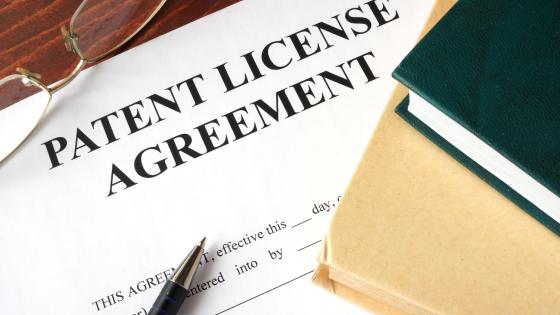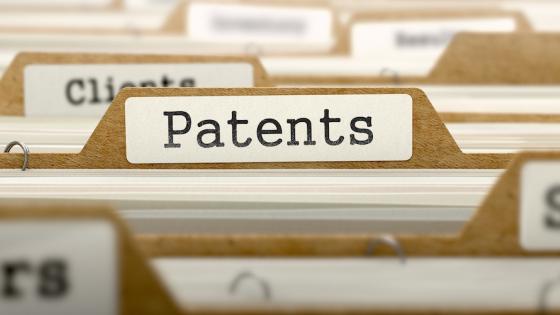The licensing of intellectual property has become increasingly contentious in recent years in particular with respect to standard essential patents. Standards play a critical role in ensuring the interoperability between different equipment and thereby create value. The development of standards however relies on proprietary technologies and when the standard is frozen, it cannot be implemented without making use of the patents that cover them. For instance, the various generation of standards for mobile communications has involved an increasingly large number of patents declared essential, from a few hundred around 2000 to more than 8000 in 2020 (according to ETSI, the standard-setting organisation). As a quid pro quo for having their technology used in the standard, patent holders are required by the standard-setting organisations to commit to grant licenses on ‘fair, reasonable and non-discriminatory’ (FRAND) terms. What the FRAND commitments entails has been subject to much debate and litigation both in relation to contract and competition law. Licensing in excess of the FRAND level could be considered as an abuse of the dominant position held by patent holders whose technologies are deemed essential. In the context of this debate, the FRAND benchmark is often understood as the rate that would have been negotiated before the standard was frozen and alternative technologies were still available. Royalties negotiated ex post could result from hold up by patent holders as well as hold out by implementers (see Farrell et al. 2007 and Spulber 2000 for different views on this issue).
In recent years, another issue has become controversial, namely the stage in a value chain at which licensing should take place. When a component makes use of patented technology and is subsequently embedded in a final product, licensing could take place either for the component or the final product (or both). For instance, in the implementation of mobile technology in cars, Avanci (a patent pool that includes around 80% of all patents necessary to practice the 4G standard) was willing to license their technology only to car manufacturers and not to component makers. Daimler rejected this possibility. In the ensuing litigation, the Düsseldorf Regional Court requested clarification to the Court of Justice of the EU regarding the choice of the stage of licensing and the possibility that patent holders had abused their dominant position by refusing to grant licenses at the level of components. The Court was not given the opportunity to make findings as the parties settled in the meantime and the issue still remains open.
In a recent paper (Llobet and Neven 2022), we try to shed some light on the trade-offs that determine the level at which technology is or should be licensed. To do so, it is useful to start by analysing situations where this choice does not matter. Layne-Farrar et al. (2014) show that in a frictionless market, whether a technology is licensed upstream (at the level of the component) or downstream (and it is paid for the final product) has no effect neither on final prices nor on the profits of the firms involved. They refer to this result as ‘royalty neutrality’, and it arises from the fact that the price at which the input is bought by the downstream producer and which embeds the technology sold by the licensor adjusts to the royalty structure. In the case of upstream licensing the price incorporates this cost (mediated by the bargaining power of each of the parties) and is higher than if licensing takes place downstream.
This very simple result holds for a variety of market structures, but it assumes away some frictions that might be relevant in some industries. The most obvious reason why royalty neutrality fails is the existence of transaction costs. For example, if the cost of negotiating a licensing agreement increases with the number of licensees, it might be socially preferable that licensing takes place in the stage where the market structure is most concentrated.
In our paper, we uncover other reasons under which royalty neutrality fails and that are relevant in practice. We show that they systematically lead to a divergence of interest such that the licensor prefers downstream licensing, when both the upstream and downstream manufacturers prefer to license at the component level. Our findings are thus consistent with what we observe in markets like that of mobile telecommunications, as mentioned above. In this context, we also analyse the consequences for innovation and welfare of letting the licensor choose the stage at which licensing takes place. We consider a framework in which both the component and downstream manufacturers can invest in enhancing the value of the final product and the royalty is determined after the uncertainty surrounding the value of the product is resolved.
As it turns out, informational asymmetries play an important role in the preference for downstream licensing. In the baseline model, we study the case where the upstream firm produces a unique component that can be embedded in products of different value. If licensing takes place upstream, the royalty rate cannot be related to the value of the final product in which the component is embedded, as this is not observed. In contrast, the licensor can set a royalty rate downstream that is commensurate to the value of the product in the final market that embeds the component. This strategy increases profits for the licensor as it can extract more surplus from each transaction.
Interestingly, this ability to extract more surplus downstream is also what underlies the preference of the licensor for ad-valorem royalty rates (i.e. a percentage of the price of the product) instead of per-unit rates (a fixed amount per unit sold). When a patent holder has a choice between an ad valorem rate upstream and downstream, it will always prefer to license downstream and royalty neutrality fails. This result arises because downstream licensing allows the licensor to obtain a return that is more closely related to the value of the final product, leading to higher profits than per-unit royalty rates. Furthermore, the licensor prefers to use ad-valorem royalties, as opposed to per-unit, because they yield a revenue that depends on the value of the product even when this royalty rate cannot be directly adjusted to different realisations of the value of the product.
Finally, we analyse the effect of informational asymmetries between the upstream and downstream firm and how they can be exploited by the licensor. In particular, we suppose that the upstream producer, by manufacturing the component that embeds the patented technology, is more knowledgeable about its characteristics than the downstream firm that embeds the component, together with many other inputs, in the final product. We model this additional knowledge as being better at assessing whether a license is necessary, which is related to the probability that the patent is valid and/or that it is actually essential for the standard.
In this context, when licensing takes place upstream the licensor can charge a relatively high royalty rate that is only paid when the patent turns out to be valid. In contrast, if licensing takes place downstream, the licensor must anticipate the highest royalty rate that this firm might be willing to accept to avoid taking the gamble of going to court and facing the risk of being unable to produce. Interestingly, we show that even in the absence of legal costs, the licensor always obtains on average a higher royalty rate under downstream licensing for any given level of investment by the manufacturers. The reason is that downstream licensing provides a more effective way to extract the surplus from the upstream and downstream firms, as a constant royalty is paid with a higher probability. This is in contrast with the case of upstream licensing where the royalty rate is only paid when the license is necessary. It follows that, to obtain the same average revenue, the quantity sold must be distorted more by the patent holder under an upstream royalty rate, which is paid with a lower probability, relative to a downstream one.
In all the cases we study, the licensor has a preference to negotiate downstream. This typically has important consequences for welfare, as it tends to reduce the deadweight loss associated with market power. In the first two cases (under price discrimination and ad-valorem royalties), it allows for a more efficient surplus extraction, making licensing of low-value products profitable for the licensor. In the last case, the fact that the deadweight loss is convex in the royalty rate means that a royalty that applies in all states of the world (i.e. whether there is a need to pay for the license or not) might be preferable to a lower one that applies in only some cases.
This static gain must be balanced against the dynamic effect that the different distribution of the surplus has on the incentives for firms to innovate in the first place. To the extent that downstream licensing undermines the profitability of the upstream and downstream firm, it reduces their incentives to make investments that are complementary to the technology licensed. We show that, depending on the magnitude of the dynamic effect (which should be neither too high, nor too low), the patent holder will prefer to license downstream, but that welfare would be higher if upstream licensing is enforced. As we do not consider the incentives to invest in the patented technology in the first place, our analysis is particularly relevant to markets that represent a modest part of the overall value of the technology.
References
Farrell, J, J Hayes, C Shapiro and T Sullivan (2007), “Standard Setting, Patents, and Hold-Up”, Antitrust Law Journal 74: 603-670.
Layne-Farrar, A, G Llobet and J Padilla (2014), “Patent Licensing in Vertically Disaggregated Industries: The Royalty Allocation Neutrality Principle”, Communications and Strategies 95(3): 61–84.
Llobet, G and D Neven (2022), “Investment and Patent Licensing in the Value Chain”, CEPR Press Discussion Paper No. 17405.
Nagaoka, S (2019), “Licensing of standard essential patents: Hold-up, reverse hold-up, and ex-ante negotiation”, VoxEU.org, 15 May.
Spulber, D F (2020) “Licensing Standard Essential Patents with FRAND Commitments: Preparing for 5G Mobile Telecommunications”, Colorado Technology Law Journal 18(1): 79–159.



